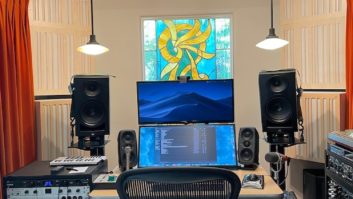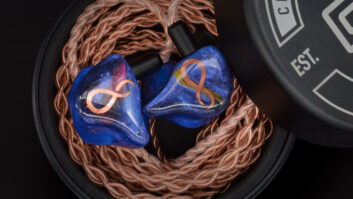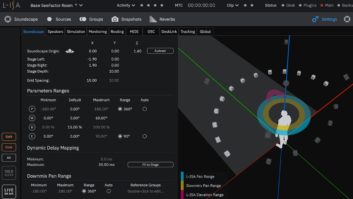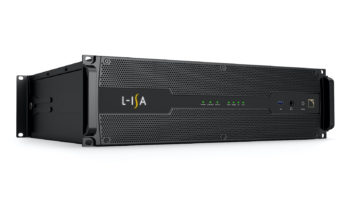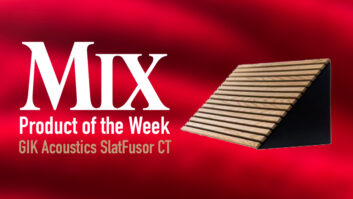PHYSICAL CHARACTERISTICSThe Sundholm SL6.5w cabinet is a bass-reflex design with a flared 2-inch diameter port on the baffle. The cabinet is constructed of 31/44-inch-thick MDF with a speckled granite paint finish. The woofer is recessed and flush-mounted onto the baffle with t-nuts. The tweeter is recessed one inch into the baffle, secured by wood screws and topped off by an MDF waveguide, which acoustically aligns the two drivers. There is an MDF cross-brace inside the cabinet, between the woofer and tweeter. Fiberglas insulation is on five of the six internal surfaces, but not completely covering each surface (which may explain the minor spikes in the tail end of the time response at approximately 4.2 and 5.1 milliseconds on the impulse response graph; see below).
The 6 11/42-inch woofer appears to be sourced from Vifa. It includes a 1 11/44-inch-diameter voice coil. The formed curvilinear polypropylene cone has a half-roll rubber surround, which is more environmentally stable than a typical paper cone with a foam surround, and is topped off with a soft rubber dust cap. The 3.5-inch-diameter flat spider is mounted to a black, cast-aluminum frame, which in turn is secured onto a .22-inch-thick top plate. This unshielded design uses a 3.56-inch-diameter, .67-inch-thick ceramic magnet. Male terminals allow for both .205-inch and .110-inch connectors.
The Vifa tweeter has a 1-inch-diameter soft-dome diaphragm made from treated polyester cloth mounted onto a 4-inch-diameter plastic faceplate, which is covered by an MDF waveguide. The conventional motor structure (top plate, magnet, back plate/pole piece) is unshielded, but the pole piece is vented into a damped, sealed plastic enclosure to lower the tweeter’s resonant frequency, as well as reduce reflections and cavity resonances. Terminations are dual male .110-inch connectors.
The crossover features two pairs of gold-plated, five-way binding posts with straps, allowing full-range or bi-amp operation. The binding posts are mounted onto a plastic terminal cup. Inside the enclosure, the crossover components are soldered point-to-point, arranged neatly onto a Masonite board.
ACOUSTICAL CHARACTERISTICSThis monitor possesses a fairly flat frequency response. Aside from a 11/42-octave-wide peak centered at 700 Hz, the frequency response varies only +/- 1.5 dB from 100 to 20k Hz. During the last octave, 10 to 20 kHz, there appears to be some comb filtering, probably attributed to the minor discontinuities of the MDF waveguide and tweeter faceplate. The off-axis response is surprisingly smooth. From 700 to 20k Hz, the sensitivity rolls off 10 dB at a nearly constant slope.
The Sundholm’s impulse response is fairly well-damped except for the two minor spikes spaced about 0.9 milliseconds apart, probably due to internal cabinet reflections. The woofer and tweeter appear to align in time due to the physical offset of the tweeter.
Due to the quality of the Vifa transducers, the distortion response is fairly low. The distortion measurement was taken around 85 dB and shows that the system maintains below 1%, with just a few data points over 0.5%. The spectral contamination reveals that the self-noise of the speaker is around 50 to 55 dB down from the input signal.
